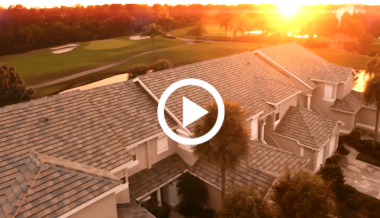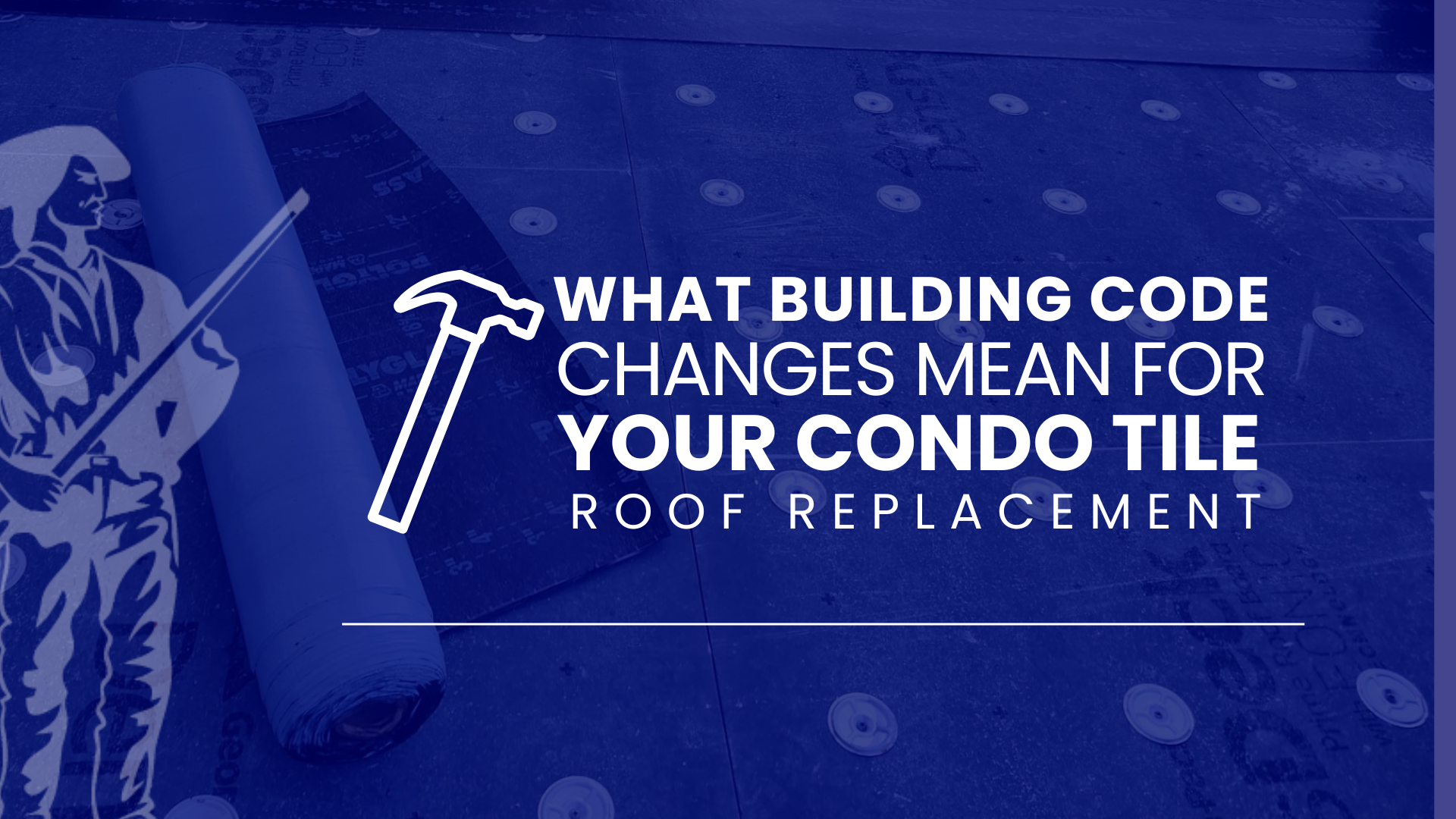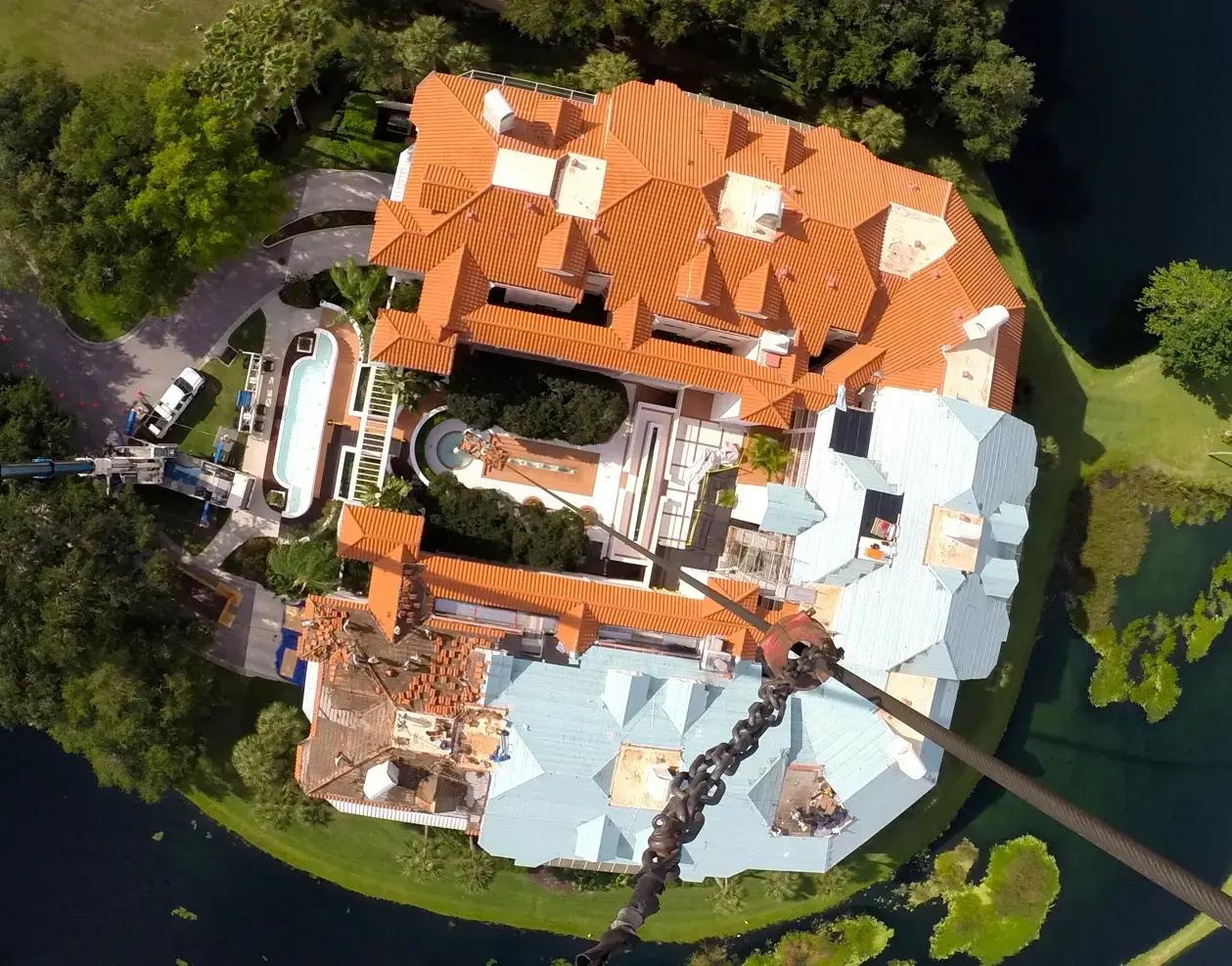Recent hurricane activity has shown us just how destructive Florida’s storms can be. Entire roof systems were torn away, communities faced massive water intrusion, and many properties learned that older standards were no match for today’s weather. These lessons, along with ongoing storm data, pushed Florida to update its building codes once again. Boards should expect that stricter standards will continue to be introduced in the years ahead, and working with a Florida roofing contractor who embraces specifications and keeps up with these changes is essential for your investment, your insurance coverage and how your premiums will change as the years go by.
Why the Code Changed
Florida is no stranger to high winds, hurricanes, and severe weather. Over the years, building codes have evolved in response to storm damage, insurance claims, and new product testing. The most recent changes were adopted into the 7th Edition Florida High Wind Concrete and Clay Tile Installation Manual, created by the Tile Roofing Industry Alliance (TRI) and the Florida Roofing and Sheet Metal Contractors Association (FRSA) and Florida Building Codes.
The purpose of the manual is to set clear standards for contractors and inspectors, reduce confusion, and improve the performance of tile roofing systems. The updates recognize new products on the market, incorporate the latest wind uplift requirements, and provide enhanced installation practices designed to increase the long-term reliability of tile roofs in Florida’s climate.
The Anchor Sheet Requirement
One of the most important changes affects how underlayments are installed when reroofing over an existing self-adhered membrane.
In the past, some contractors would install a new peel and stick directly over the old one, or place a felt sheet between layers. This shortcut no longer meets code requirements and could fail uplift testing and lead to premature roof failures in storms.
The updated code now requires a mechanically attached anchor sheet over any existing self-adhered membrane in high velocity wind zone regions of Florida. Only after that sheet is installed can a new peel and stick layer be applied. This ensures the entire system bonds correctly and meets the latest uplift standards.
Why it Matters for Associations
The challenge for associations is that inspectors cannot see what lies beneath the tile once the roof is installed. A roof may pass inspection, but if a contractor ignored the anchor sheet requirement, the system is not compliant and may fail under storm conditions. This creates real risks for associations, including denied insurance claims, hidden vulnerabilities, and costly repairs sooner than expected.
This is why working with roof specifications is so critical. When boards rely only on proposals and do not start with a spec, contractors may interpret requirements differently to win a job based on price and leave some of these important standards out. Some may leave out key items like proper underlayment or flashing replacement to keep their bids low. Others may reuse materials that should have been replaced. The result is that boards are comparing numbers, not systems, and risk approving a project that does not provide long-term protection.
Colonial Roofing's Standards
At Colonial Roofing, we never take shortcuts. Our proposals reflect the latest Florida Building Code requirements, and we back up our recommendations with documentation from manufacturers. When we spec a system, it is because the products have been tested and proven to meet wind uplift standards.
We go further than many roofing contractors. Our team participates in ongoing materials training and certifications directly with materials manufacturers. That means our crews are not only trained to install each product to code, but also to the exact specifications required by the manufacturer. By staying current on both codes and certifications, we ensure that every installation meets the highest standard possible.
In addition, we consistently stress the importance of roof specifications to boards. Specs create an apples-to-apples comparison for bids and ensure that contractors cannot cut corners on details like underlayment attachment, flashing, or roof-to-wall transitions. This extra step saves associations from expensive mistakes and ensures that every dollar spent on a reroof is invested in long-term protection.
What Boards Should Do Now
If your association is planning a roof replacement or even budgeting for one in the near future, now is the time to get familiar with the code changes. Ask your contractor:
- How will the underlayment be installed to meet the updated code?
- What products are being specified, and are they approved by manufacturers?
- Does the contractor maintain current training and certifications?
- Will the proposal follow roof specifications so the board can fairly compare bids?
The 2024 Florida Building Code updates are not just technicalities. They are safeguards designed to protect communities from storms like Hurricane Ian. For associations, this means stricter requirements, greater need for specifications, and the importance of working only with roofing contractors who stay current with both code and manufacturer training.
Colonial Roofing is proud to lead the way by combining technical knowledge with manufacturer certifications and a commitment to specifications. When you partner with us, you know your roof will be designed and installed to meet today’s standards and withstand tomorrow’s storms.
.jpg)

.png)


